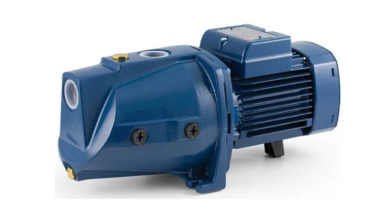How Welding Cobots Are Transforming Modern Manufacturing

In today’s manufacturing industry, automation is increasingly essential. A major innovation in this field is the welding cobot, or collaborative robots. These cobots work alongside human operators to make welding faster, more precise, and safer.
Welding cobots are part of a bigger trend where machines help make work faster, reduce mistakes, and deal with worker shortages. This guide explains how welding cobots are transforming modern manufacturing, describing their workflow, advantages, and how they improve weld quality.
What is a Welding Cobot?
A welding cobot is a robot that works safely alongside human welders. Unlike traditional robots, it doesn’t need safety cages because its sensors can detect people and adjust its actions to prevent accidents.
Why Welding Cobots Work Alongside Human Welders
- Safety Features: Sensors detect human presence, allowing the cobot to stop or slow down to prevent accidents.
- Ease of Programming: Simple interfaces let operators program the cobots without advanced technical skills.
- Adaptability: Cobots can be reprogrammed and repositioned to handle different tasks, making them versatile in manufacturing.
- Support for Skilled Labor: Cobots handle the repetitive and physically tough tasks, allowing welders to focus on more complex and valuable work.
Welding cobots are designed to complement human welders, improving efficiency, consistency, and safety while allowing skilled workers to focus on higher-value tasks.
See also: Life Impocoolmom: Life Tips From Impocoolmom: Advice for a Balanced Lifestyle
How Welders Can Integrate Welding Cobots into Their Workflow
Welders can successfully add welding cobots to their work by following a few important steps that improve both safety and productivity:
- Conduct a Safety Check
Before using a cobot, welders should assess the workspace for hazards and apply safety standards like ISO-10218-4 and TS-15066. This ensures the environment is safe for both humans and robots.
- Prepare the Workspace
Clear paths for the cobot’s movement, install spatter guards, and organize cables properly to reduce tripping risks or equipment conflicts.
- Connect the Cobot to Welding Equipment
The cobot must be mechanically and electrically linked to the welding machine so both systems can work together smoothly.
- Program the Cobot
Welders use easy-to-use software, teaching pendants, and hand-guiding tools to set precise weld paths. Programs can be saved and reused for repetitive tasks, reducing setup time. Some systems even allow drag-and-drop programming for complex weld sequences.
- Add Sensors for Accuracy
Using touch sensing and seam-tracking sensors, cobots can adjust to slight changes in joint position, producing consistent and high-quality welds.
By following these steps, welders can successfully integrate cobots, improving workflow efficiency, ensuring consistent weld quality, and creating a safer work environment.
Key Advantages of Welding Cobots in Manufacturing
- Better Welding Accuracy
Welding cobots follow precise paths, producing welds that are even and consistent. This reduces mistakes such as cutting too deeply into the metal or trapping debris in the weld. Fewer errors mean less wasted material, lower costs, and higher-quality products.
- Higher Productivity
Cobots can perform repetitive welding tasks continuously without fatigue. For example, they can keep the welding arc active 90% of the time—about three times more than human welders. This boosts output and keeps production running efficiently.
- Improved Worker Safety
Welding can expose workers to heat, bright sparks, and harmful fumes. Cobots take on the dangerous work, keeping employees safer and reducing the risk of injuries. Safer conditions also create a better work environment and help retain skilled workers.
Welding cobots improve accuracy, increase production, and enhance worker safety. They allow humans to focus on skilled tasks while the robot handles repetitive and dangerous work.
How Welding Cobots Are Changing the Role of Welders
Welding cobots are changing welding jobs by doing the repetitive work, so welders can focus on more skilled and important tasks. Here’s how:
- From Manual Work to Supervisory and Programming Roles
Cobots handle repetitive and physically demanding tasks, allowing welders to shift into more skilled roles. They can focus on supervising the robots, programming welding parameters, and ensuring quality, effectively becoming robotics supervisors or welding process engineers.
- Opportunities to Learn New Skills
Using cobots means welders need training in robot programming and maintenance. Learning these new skills improves their technical expertise and can open doors to higher-level positions. Companies that provide this training often see happier employees and better career growth.
- Less Physical Strain and Better Work-Life Balance
Cobots handle the toughest tasks, reducing the physical stress on welders. This leads to fewer injuries, less fatigue, and a healthier work-life balance, making welding a safer and more sustainable job.
Welding cobots let welders focus on more skilled work while making production safer, faster, and more satisfying.
How Welding Cobots Improve Weld Quality
- Precision: Cobots follow exact programmed paths, placing welds accurately and avoiding common mistakes like cutting too deep or uneven welding.
- Consistency: They perform each weld the same way every time, ensuring uniform quality and minimizing the need for rework.
- Adaptability: Advanced sensors allow cobots to adjust to slight changes in part position or material variations, maintaining weld accuracy even when workpieces aren’t perfectly aligned.
- Reduced Human Errors: Cobots take over repetitive or tough tasks, reducing mistakes caused by tiredness or varying skill levels.
- Material and Cost Efficiency: Fewer errors and less rework mean less wasted material, lower costs, and stronger, more durable welds.
Welding cobots create better welds efficiently and cost-effectively.
Welding Cobots in Modern Manufacturing
Welding collaborative cobots (robots) are changing modern manufacturing by automating repetitive and tough welding tasks. They help improve productivity, consistency, and safety in many industries.
Key Applications
- Automotive Manufacturing
Cobots weld parts like seat frames, fuel tanks, suspension arms, and exhaust systems. Their precision ensures high-quality welds on complex parts, boosting efficiency.
- Aerospace Industry
Cobots handle high-precision welds on lightweight materials, maintaining safety and structural integrity while working with complex shapes.
- Heavy Equipment Manufacturing
Welding cobots are used to weld thick metals, ensuring that the machinery parts are strong, durable, and consistently high quality.
- Consumer Appliances
Cobots produce uniform welds on appliances, improving quality and reducing defects.
- Energy and Infrastructure Projects
They weld large structures and components, ensuring reliable, defect-free results for critical infrastructure.
Welding cobots boost efficiency, quality, safety, and cost savings in manufacturing.
How to Choose a Welding Cobot
- Easy-to-Use Interface: Select cobots with simple controls that let welders program them using touchscreens or mobile devices, without requiring advanced coding skills.
- Flexibility: Choose cobots that can handle different tasks, welding methods, and workpiece sizes. They should have enough reach and strength for large parts, work well with existing machines, and easily adapt to changing tasks.
- Easy Installation and Maintenance: Pick cobots that are quick to set up, easy to maintain, and have accessible replacement parts. Modular designs help speed up repairs and reduce downtime.
- Stable and Precise Results: Ensure the cobot delivers consistent welds with high accuracy (±0.1mm), using real-time monitoring, adaptive controls, and proper tooling to minimize errors and rework.
Conclusion: Welding Cobots in Modern Manufacturing
Welding cobots are transforming modern factories by handling repetitive, physically demanding, and dangerous welding tasks. Working safely alongside human welders, they improve weld accuracy, increase production speed, and enhance workplace safety. This lets welders focus on higher-skilled tasks such as supervising robots, programming, and quality control, while also gaining valuable technical skills.
Cobots enhance welding in various industries by delivering consistent, high-quality welds, minimizing errors, and lowering costs. Selecting cobots that are user-friendly, flexible, precise, and easy to maintain ensures manufacturers get the most value from them.
Welding cobots don’t replace human welders, they empower them to work smarter, safer, and more efficiently.




